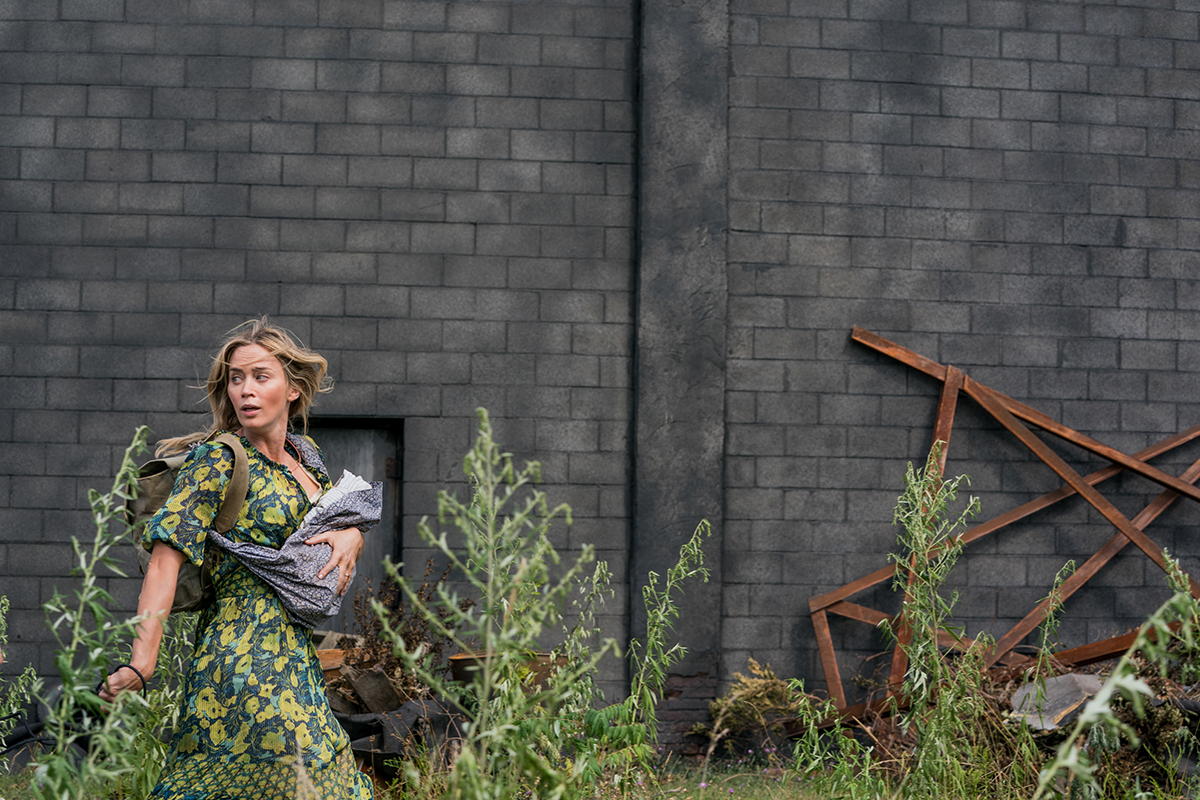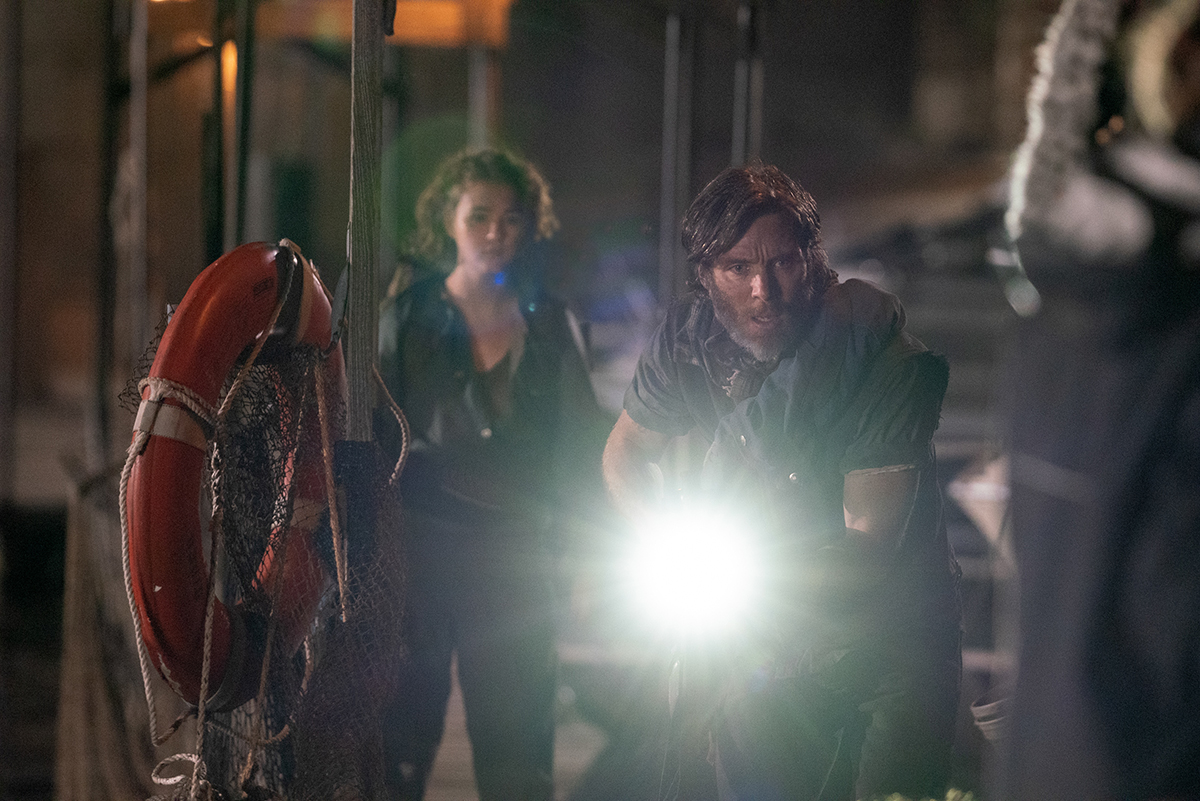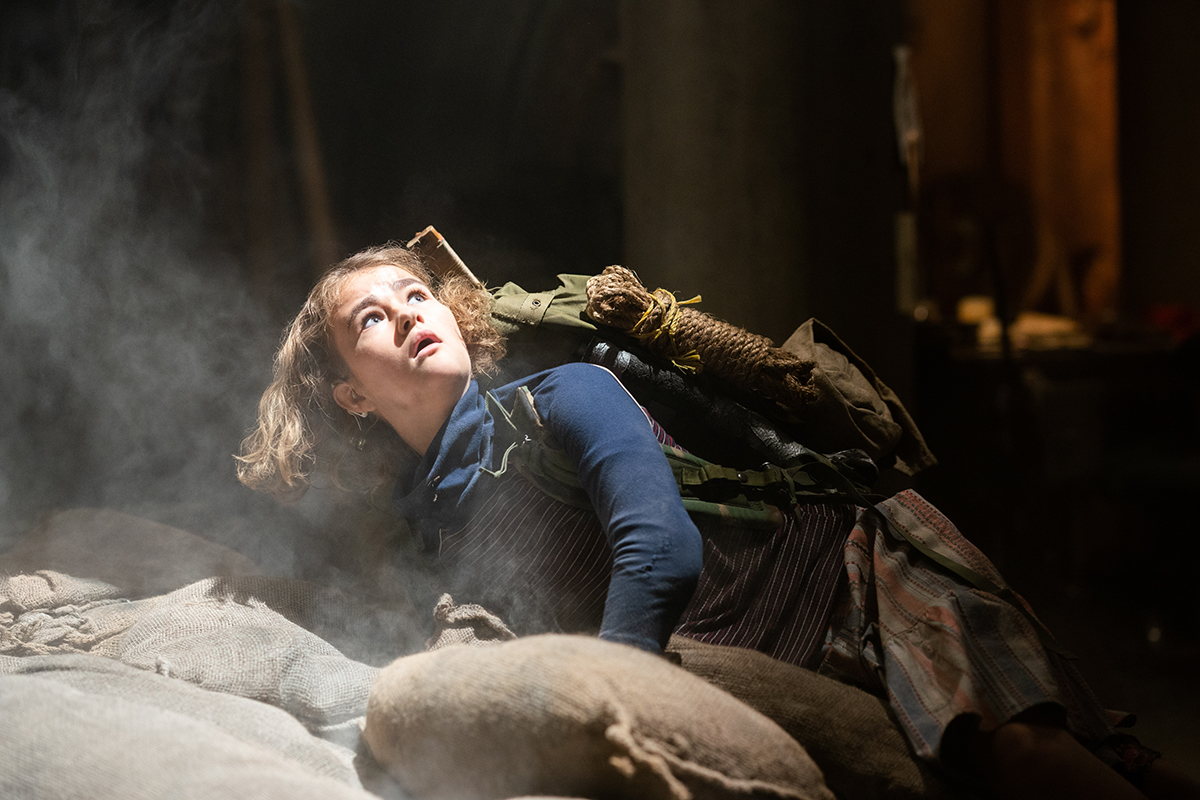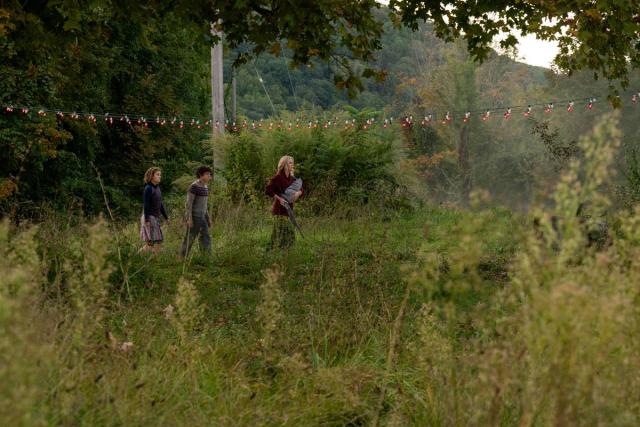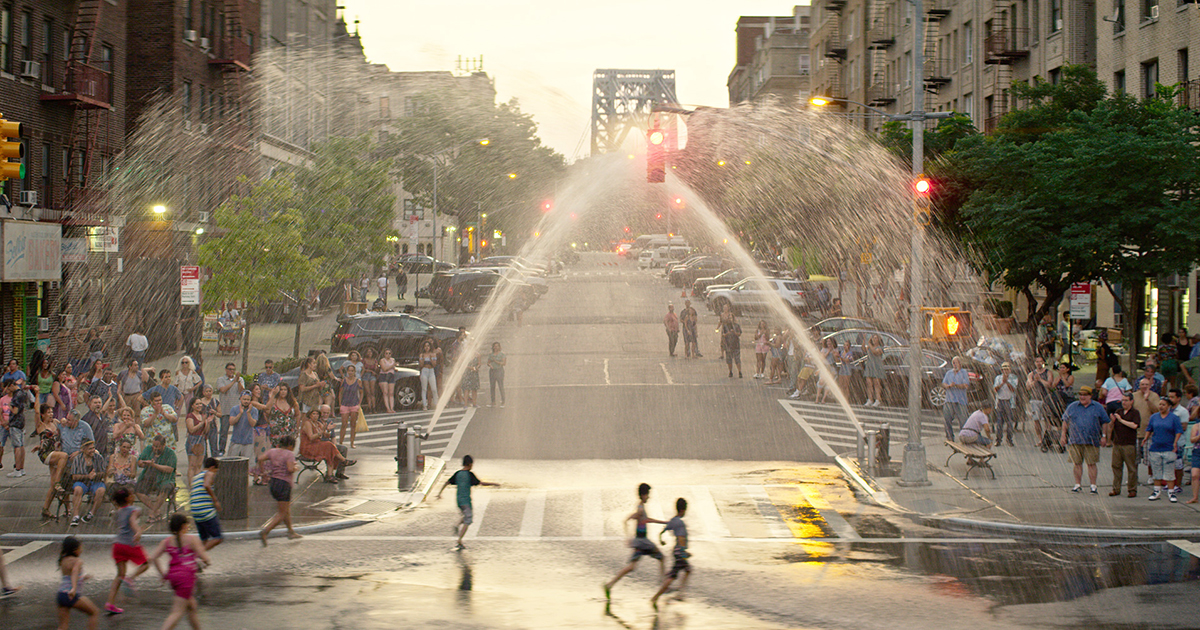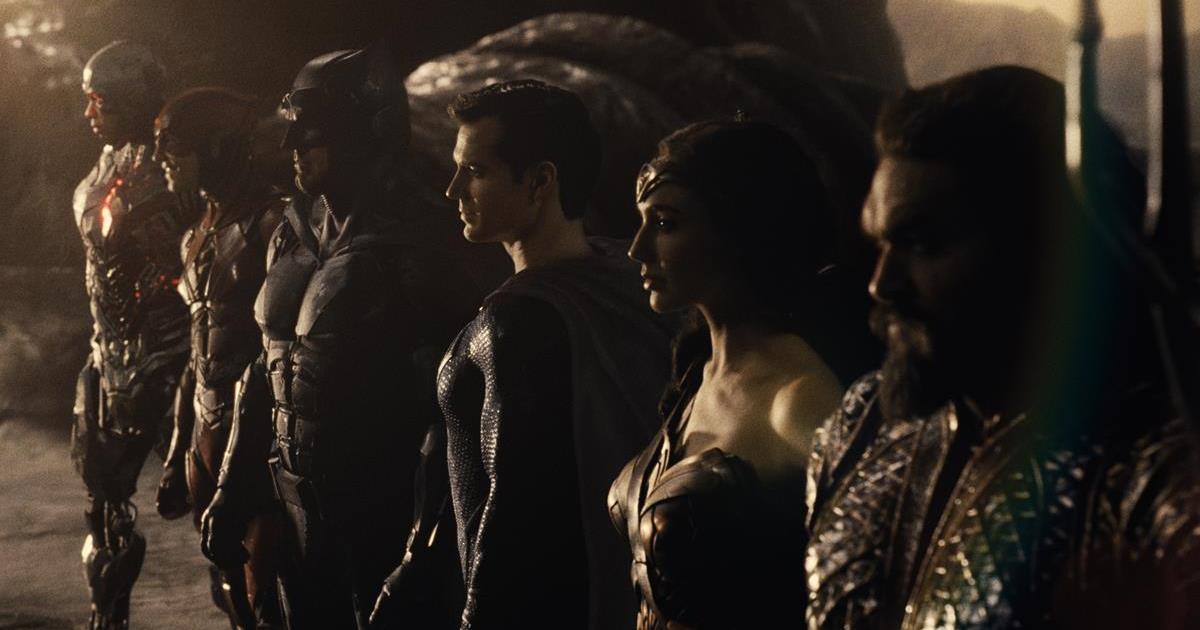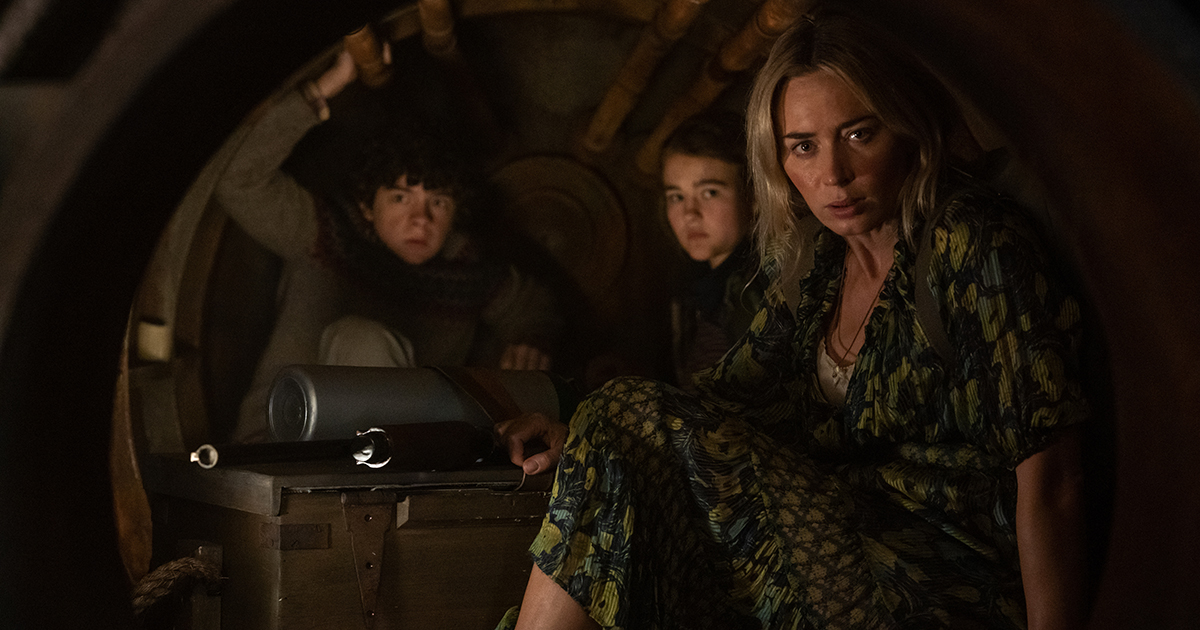
The only way to watch A Quiet Place Part II is to be in a quiet place. Ideally, you’d be in the cinema with full Atmos surround sound but if not, for true jump scare enjoyment, you need to reserve time on the couch with no interruptions. Otherwise, you’ll miss half the story.
In 2018 A Quiet Place was nominated for an Oscar for sound editing for the work of supervising sound team Erik Aadahl and Ethan van de Ryn, who return for director John Krasinski’s sequel.
The premise, for those needing to catch up, is that of a world terrorized by monster aliens who make up for what they lack in sight with super sensitive hearing. They prey on anything that makes a sound, and in particular the Abbot family (the husband and wife played by real-life couple Krasinski and Emily Blunt).
Making the original film, the sound designers first established rules around silence in order to know when to break them. They next developed a set of aural identifiers, or “sonic envelopes” in their terms, to tell the story from different perspectives. You can read all about that at IBC 365: “Behind the Scenes: A Quiet Place.”
Entering the second film, the task was how to expand on that universe, expand on the creature sound design, build it out and create a bigger vocabulary.
“When we start working it’s not always immediately evident what’s going to work the best,” Van Der Ryn explains to Coming Soon. “So, there’s a real process of experimentation to get there and figure out what’s going to work the best.”
Often it is silence itself which is golden. It’s something that both artists realized working on blockbusters together including Godzilla, Monsters vs Aliens, The Meg, Bumblebee and every Transformers movie. Before partnering with Aadhal, Van der Ryn had worked on The Godfather: Part III, Terminator 2: Judgement Day, Titanic, Saving Private Ryan, Pearl Harbor, The Lord of the Rings trilogy and King Kong, while Aadahl’s credits include I, Robot, Superman Returns, Argo and The Tree of Life.
READ MORE: A Quiet Place Part II Sound Designers Explain How They Scare Audiences (Coming Soon)
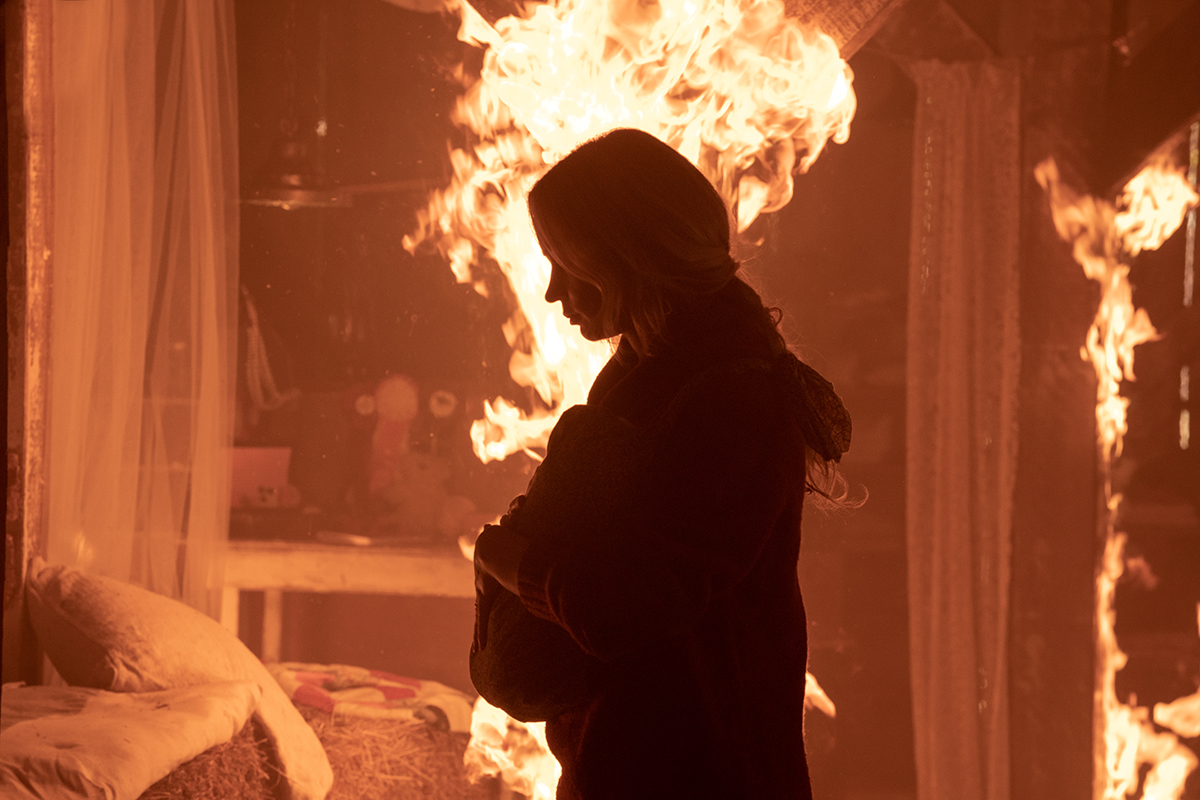
“Sometimes if you have too much sound happening at once it turns into mud and just overload, and what becomes important is contrast,” Van Der Ryn says. “And what contrast means in those terms is taking sound out and not playing sound.”
He explains that their basic unit of measurement is a 24th of a second (one frame) and that they are looking to create contrast by taking sound out for these microseconds or possibly being able to expand that a little longer and create more contrast.
“These films — part two in particular — really provide us a brilliant canvas for being able to play with that whole idea of creating contrast through lots of sonic action and then cutting to extreme quiet; or, in the most extreme case of that, total digital zero silence.”
The opening of the movie is in a sense a prequel to the first, establishing the moments before the aliens arrive on earth. It unfolds in real-time the lead characters doing mundane little errands like picking up oranges from the store and going to the little league game.
“Sometimes if you have too much sound happening at once it turns into mud and just overload, and what becomes important is contrast. And what contrast means in those terms is taking sound out and not playing sound.”
— Ethan van de Ryn
“Moment by moment, we’re slowly building tension through the simple everyday acts of everyday life to when we see the first fireball start to drop from the sky and then the mayhem that ensues,” Aadahl says. “That was a really complicated sequence on a production level; and then also very challenging for us to create the reality of this entire experience. It’s one big chunk of the movie where there’s no music and purely sound design.”
Also returning in A Quiet Place Part II is the character of young Regan, a deaf character played by Millicent Simmonds, who happens to be deaf in real life. As before, when we go into her sonic perspective all we hear is sort of the low rumble of her cochlear implant, unless it’s turned off and then we hear complete digital silence.
“In the opening of the movie we really used Regan as a kind of a palate cleanser within the chaos of this scene,” says Aadahl. “We’d pop into her point of view and hear almost nothing; and there’s something kind of visceral and shocking about that experience.”
The opening sequence of A Quiet Place – Part II doesn’t immediately reveal that the audience is seeing the day the Abbott family was forced into silence by deadly creatures from another world, making the sound of Lee Abbott’s truck all the more shocking with its unnatural, ominous loudness.
“It was so thrilling for us to work on that prologue where the audience knows what is coming and even the most ordinary sounds bring a sense of dread,” Van Der Ryn said in an interview with The Wrap’s Jeremy Fuster. “With every director we’ve worked with, we are always telling them that sound is 50% of the film experience, but in these movies in particular that becomes very evident and this was a great experience to come back to.”
It was a challenge for the sound editors to create entirely new sounds for creatures that don’t exist, Van Der Ryn commented:
“The creatures use strong hearing to hunt, so we started with the idea of replicating actual animals like dolphins and bats that use echolocation to observe their surroundings. We felt it would have been too obvious to use the ‘clicks’ that those sort of animals use as the basis for the creatures, but we found that when you record the clicks made by a stun gun and slow them down, they create this disturbing, otherworldly sound that was perfect for the film.”
READ MORE: ‘A Quiet Place – Part II’: How the Sound Designers Made the Horrifying Prologue (The Wrap)
Crafted by Krasinski to reveal how the monsters arrived, and what they did to the Abbott family’s hometown before the events of the original film, the 10-minute prologue was the first sequence Aadahl and Van der Ryn worked on, they revealed in an interview with Syfy Wire.
“The opening of the film was my favorite chunk of the film to work on because it’s got a little bit of everything,” Aadahl recounted:
“It’s also the only stretch of 10 minutes that there’s no music. It is pure, visceral sound design, and by not having music, it feels more real. And I love the arc of it that John created in the script where it’s just ‘a day in the life,’ with this sleepy little town’s Main Street. And there’s little sound details like the ding of a flagpole, the little click of the street stoplight. You think we’re back into the world of A Quiet Place, and then vroom! A pickup truck comes in and John steps out. And it’s incredible to me how much tension there can be where there’s nothing happening. It’s the anticipation of what’s going to happen.”
Van der Ryn said the duo’s early creative choices were all about how to juxtapose the monsters and their signature sounds with Regan’s perspective. “I love being able to help create this scene that just becomes total chaos,” he said:
“Being able to flip from the middle of that into Regan’s point of view of total silence, to me, that was such a powerful use of that idea that we established in the first film, where at times we flipped into her sonic POV being able to strip all the sound out. But now in this one, in the opening of the movie, being able to go from loud, chaotic, scariness into total silence. For me, that was the ultimate use of that tool that was developed in the first film, so that was very exciting.”
Once the monsters appear, “we just methodically unfold, step-by-step, the chaos,” Aadahl continued. “But built into that, we’ve got these moments of quiet where characters are trying to hold their breath, or we go into Regan’s point of view. To me, it’s just like being in a playground as a sound designer, that kind of a sequence.”


